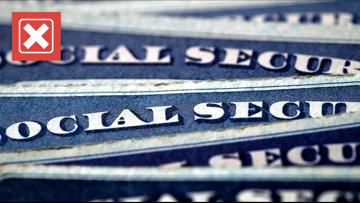Politicians have discussed the importance of reigning in the U.S. government’s debt with varying vigor for decades. Those debates have brought more attention to federal debt over the years, leading to websites dedicated to tracking the debt in real time.
But are those independent calculators, often calling themselves “debt clocks,” reliable? That’s what one anonymous viewer asked in an email.
THE QUESTION
Are online debt clocks a real calculation of money the government owes?
THE SOURCES
THE ANSWER
Online national debt clocks use official data to give an idea of how much money the federal government owes. However, their by-the-second numbers are unofficial estimates based on that data.
WHAT WE FOUND
The two most popular online national debt clocks are from U.S. Debt Clock and the Peter G. Peterson Foundation. They both say as of June 2, 2021, the federal government is more than $28 trillion in debt, however they differ from each other by more than $100 billion.
While the U.S. Debt Clock sources its data to the U.S. Treasury, the PGP Foundation goes into a bit more detail. It explains its data is updated each day based on the Treasury’s daily debt to the penny page. It then uses a formula based on the Congressional Budget Office’s debt projections, updated two to three times a year, to calculate the rate at which debt is growing.
So, it’s a projection of the federal government’s real-time debt based on official data. That means the debt clocks aren’t entirely accurate, but they are pretty close and will give you a rough idea of the federal government’s debt.
The reason their calculations are slightly off the real numbers is because federal debt isn’t something that is constantly rising at a steady rate. This is evident when looking through the data on the previously mentioned debt to the penny page, which shows the “Total Public Debt Outstanding” dropped May 25, May 26 and May 27 before rising again May 28.
It’s also important to note that both debt clocks display what the Treasury calls “Total Public Debt Outstanding.” This is the sum of two separate measures: “Debt Held by the Public” and “Intragovernmental Holdings.”
Debt held by the public is what we traditionally think of as debt. The Congressional Budget Office explains that this debt is held by “various U.S. buyers (such as the Federal Reserve System, mutual funds, financial institutions, and individual people), to private investors overseas, and to the central banks of other countries. Domestic investors currently own about three-fifths of outstanding debt held by the public.”
Intragovernmental holdings are debt that the federal government owes itself. The Committee for a Responsible Federal Budget explains that this is typically money one part of the government owes another part, such as Social Security owing money to the Treasury Department.
The Treasury’s debt to the penny calculations say the debt held by the public is about $22 trillion, the debt in intragovernmental holdings is about $6 trillion and the total public debt outstanding is just over $28 trillion.
More from VERIFY: The Colonial Pipeline shutdown was just one reason for the gas shortage
VERIFY
Our journalists work to separate fact from fiction so that you can understand what is true and false online. Please consider subscribing to our daily newsletter, text alerts and our YouTube channel. You can also follow us on Snapchat, Twitter, Instagram or Facebook.













